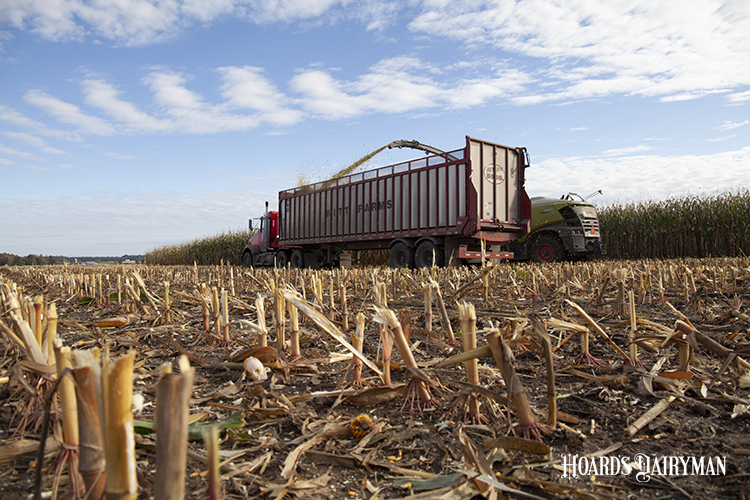
It will come to no one’s surprise that corn silage production is a costly endeavor. For a point of reference, a dairy milking around 500 cows will have invested about $250,000 in corn silage by the end of the harvest season.
That estimate was shared by John Goeser, the animal nutrition director at Rock River Laboratory and an adjunct professor at the University of Wisconsin-Madison, during the August Hoard’s Dairyman webinar. He used that point to help listeners wrap their heads around this yearly operating cost.
“Are we doing everything we can to optimize that $250,000 annual investment?” he asked the audience. “In a lot of cases, we are probably not.”
Goeser highlighted several steps along the harvesting and feeding process that can help farms get the best return on their investment.
The first was harvesting corn for silage at the right moisture. Goeser recommended chopping corn when it is at about 65% moisture (35% dry matter) to optimize starch and fiber digestibility.
Proper processing is another way to make the most of corn silage. The kernel processing score (KPS) evaluates kernel breakage by drying the silage, shaking the dried silage across several sieves, and then determining the starch content that passes through a 4.75-millimeter screen. This destruction of the kernel is important, as the surface area of exposed starch in grain is directly related to energy available for the cow.
The goal used to be a KPS of 70%, with farms averaging around 60%. Today, Goeser said the new goal is 75%, and a KPS of 80% is possible.
When it comes to ensiling, Goeser said, “A lot of aspects go into effective preservation.”
First, he recommended the use of an inoculant. “With as valuable as corn grain and silage stands to be this year, I think using an inoculant is a great decision,” he said. “Think of it like an insurance policy to preserve every pound of digestible nutrient possible.”
Inoculants also benefit the backend of the fermentation process by keeping feed cleaner and more stable during feedout. “Upfront fermentation and feedout stability are very important for preserving and hopefully achieving feedout of every ton we put in that silo,” Goeser said.
Rapidly filling the silo, bunker, or pile is also important. Goeser said to consider splitting feed storage into two piles, if possible, if chopping is spread out over a longer period.
For bunkers or piles, adequate packing is necessary for feed preservation. Goeser’s rule of thumb is that for every 100 tons delivered to the pile, multiply that number by 800 to determine the amount of pack tractor weight necessary to achieve optimum feed density.
Lastly, he said to cover the feed as soon as possible. Leaving it uncovered just a day or two, especially if there is unexpected rainfall, can have detrimental effects, not just to the top foot of feed but several feet down. He said that even if spoiled feed is pitched off the pile, microbial deterioration is happening beyond what the eye can see. “Try to get it covered as soon as possible,” he emphasized.
For more information on protecting this large feed investment, watch the Hoard’s Dairyman webinar, “Make the most of this year’s corn silage.”








